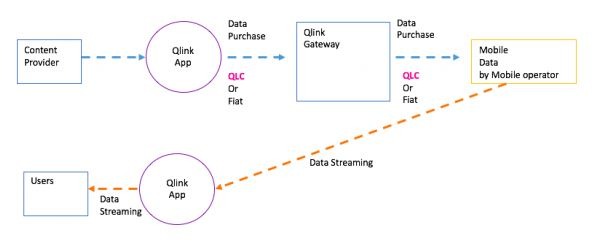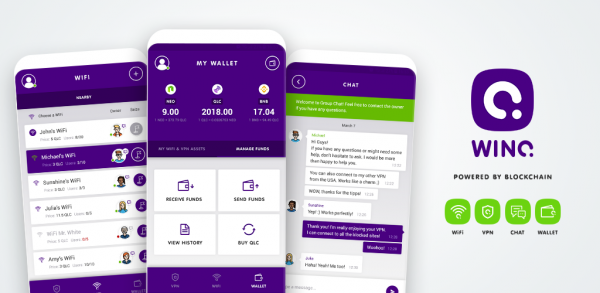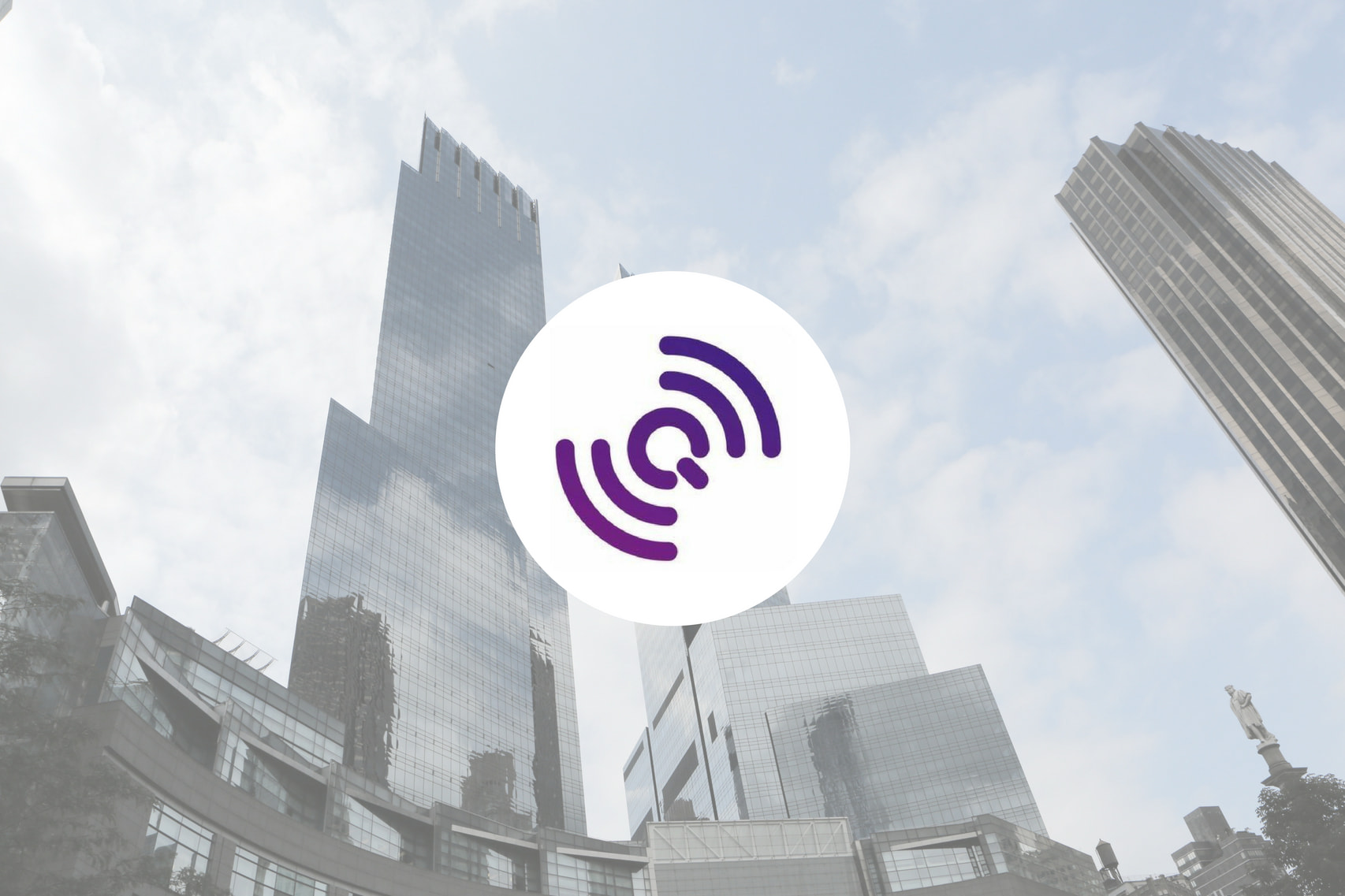QLC Chain (previously known as Qlink) is a decentralized mobile network focused on constructing an open-source telecommunication infrastructure on the blockchain.
QLC Chain is built on the NEO platform and was the second ICO announced on the NEO platform. QLC Chain claims to be the first public chain for decentralized network-as-a-service. The aim of this project is to extend network coverage, reduce the cost of telecom infrastructure, and reward users for sharing unused network assets.
The basic services QLC Chain offers include:
- Decentralized global Wi-Fi-sharing network whereby users can share their Wi-Fi hotspot and be rewarded with QLC tokens
- Decentralized billing system whereby users can purchase mobile data for content distribution
- Decentralized E2P SMS service whereby users can sell unused SMS to enterprises
- Decentralized telecom infrastructure whereby users can deploy QLC BaseStations supporting LTE-U protocol, POW, and POS consensus algorithm
The QLC tokens are used to facilitate payments and rewards in the QLC ecosystem. The token presale took place from November 22 to December 7, 2017, raising over 350,000 NEO. The crowdsale then took place on December 22, raising 10,000 NEO in 6 minutes despite a maximum individual limit of 15 NEO.
QLC Chain has come a long way since the crowdsale, and these are 5 reasons to keep an eye on this blockchain project.
1. QLC Chain Will Allow Users to Use Fiat
As stated on page 9 of their whitepaper, QLC Chain plans to speed up the adoption of the QLC blockchain by allowing users to use fiat currencies on the platform. This means that users do not necessarily have to own QLC tokens to use the QLC Chain.
This, of course, creates the argument about the usefulness of the QLC tokens. If fiat can be used to pay for services rendered by QLC Chain, then how will they spur demand and value for QLC tokens?
The answer, as explained by one of the project’s Reddit moderators, is that QLC Chain will make it possible to buy QLC tokens on the platform, and the tokens will then be used to pay for the services requested. This means that fiat is not an alternative to QLC tokens; rather, it is a factor that will drive mass adoption for QLC Chain as well as sustainable demand for QLC tokens.
The fiat integration on QLC Chain is made possible with the QLC Chain Gateway. The Gateway connects the QLC Chain to the traditional telecom operator system. Smart contracts are created on the QLC Chain Gateway to support data clearance between content providers and mobile operators.

2. The Onchain Team That Developed NEO is Co-Developing QLC Chain
Onchain is the name of the company that brought us the NEO platform. NEO is a smart contract platform like Ethereum, but works with a 2-tier consensus algorithm known as Delegated Byzantine Fault Tolerance. You can read the comparison of Ethereum and NEO for more information.
QLC Chain announced before the crowdsale and presale that the Onchain team will join hands with the QLC team to develop the QLC Chain. This increases the chances of the project’s success, as the Onchain team will bring their experience (from the development of NEO) and their track record for success to benefit QLC Chain.
The 2 teams are expected to work together until the end of phase 3 of the development plan (according to the whitepaper).
3. Enormous Upside Potential
There are currently more than 2,000 mobile network operators around the world providing communication services through centralized infrastructures that are inflexible for users. The issues with the centralized systems include difficulty in accurate content distribution and billing, expensive usage fees, operators overcharging customers, and security issues over data transmission.
The QLC Chain platform creates a viable solution for these issues.
The telecom industry is one of the largest industries in the world and is run majorly by big companies. The plan of action by QLC Chain requires these companies to get along with them. It is yet unclear as to whether QLC Chain will be able to achieve this or not. But if QLC Chain is able to partner and become connected with some of these big telecom companies, it will make the project one of the top projects in the blockchain industry.
Rumors circulated about a possible partnership with T-mobile but there is nothing official, at the time of writing. This implies that QLC Chain will either become very huge and successful, or it won’t be successful at all. There is no middle ground, but the upside potential is enormous.
4. Well-Connected Advisors and An Experienced Team
QLC Chain has a good number of advisors that are well-connected. They include Wei Li (founder of Green Pine Capital Partners), Shihuang Xie (founder of Riverhill Fund, co-founder of Alibaba Group), Zuguang Wang (ex-senior researcher at Bell Lab, founding partner at UTStarcom), and Leo Wang (angel investor in the cryptocurrency space)
Other notable names are Pak Lum (senior advisor with Tembusu Partners, former CTO and Chief Business Development Officer in StarHub, the second-largest telecom in Singapore), Josh Dai (former CTO of Bitmain), and Zheng Zuo (partner of HongQiao Capital and early Blockchain Capital investor).
The QLC Chain development team is led by Allen Li. Li is a former Huawei software engineer and multiple patent owner. He spent 7 years at Huawei and then 4 years as CEO of Youyou Mobile (a company which he founded) before embarking on QLC Chain.
The co-founder and COO is Susan Zhou, who has over 10 years’ experience in the telecom and investment industry. The head of investor relations is Roger Lim (co-founder and former CEO of webvisions), Toya Zhang (former senior PR manager of OKCoin) is the CMO, and Tony Gu (Managing Director of Rhodium Capital) is the head of strategy.
5. Upcoming Mainnet Release (Before the End of 2018)
On April 4, 2018, QLC Chain announced their first dapp (which also happens to be the first dapp on the NEO platform) on Google Play Store. The dapp, known as WinQ, was deployed on the NEO testnet. It must be noted that, since this app operates on the testnet, any QLC mainnet tokens sent to it will be lost.
The WinQ app is meant to bring the QLC experience to users pending the mainnet launch. Plus, there are opportunities to win testnet tokens on the dapp, which will be converted to mainnet tokens once the dapp is launched on the mainnet.

According to the roadmap on the QLC Chain website, the mainnet launch, as well as the launch of the QLC base station should take place in Q4 2018. The launch of QLC Chain on the mainnet signifies the end of the development phase. Efforts are expected to be heavily placed on user adoption after the development phase is over.
This will go a long way to define the real value of QLC Chain over the coming years. The near-term mainnet launch is definitely a reason to keep an eye on QLC Chain.
Final Thoughts
QLC Chain is a project that shows great potential and is definitely one that might yield great returns if it becomes successful. The adoption is growing with over 10,000 downloads of the WinQ dapp on Google Play already.
It must be noted that the QLC token is a NEO-based NEP-5 standard token. The total supply of QLC tokens is 600 million. One QLC token is currently priced at about $0.05, plunging from over $1 in January 2018. With the mainnet launch approaching, this might be a good buying season for investors. However, you are advised to embark on your own further research before making any investment decision.
Stay in touch with QLC Chain via Telegram, Twitter, and their blog.

